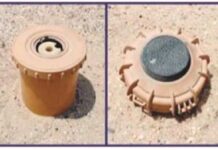The Ministry of Health is making remarkable efforts to address the problem of medical waste from all its health facilities, in the public and private medical sectors, which goes through many stages starting from its transfer from the health center or facility, up to the incinerators.
The ministry burns approximately 895 tons of hazardous medical waste that is collected from health care facilities, medical laboratories, pharmacies and pharmaceutical factories belonging to the government and private sectors in these incinerators in some stages reach about 1200 degrees Celsius and other non-hazardous waste is buried at landfills, reports a local Arabic daily.
According to the Assistant Undersecretary for the Services Sector at the Ministry of Health, Abdulaziz Al-Tasha, medical waste also includes waste that is likely to be infectious, and includes waste generated from medical facilities of all kinds, as well as waste from laboratories and pharmacies.
Al-Tasha indicated that the aim of treating such waste is to reduce and eliminate its risks, pointing to several methods of treatment, such as those carried out through “incineration technology”, with very high temperatures that reach in some stages 1200 degrees Celsius, in specially prepared units, and it is considered one of the most reliable, common and efficient methods.
He pointed out that the task of supervising and following up on the work of the stations falls within the Ministry’s Hotel Services Department, which is entrusted with the implementation of contracts for central treatment plants, pointing to technical committees that supervise and follow up their work periodically, in addition to submitting direct reports to ministry officials on the quantities of treated waste.
Al-Tasha said the ministry is keen to reduce waste in health facilities, which in turn reduces procurement costs, disposal expenses and the risks of dealing with it, by training workers in departments that produce large quantities of it on how to reduce it and sort it with the yellow color coding approved for hazardous medical waste collection bags. And containers, in addition to focusing on changing work methods and procedures in which low-product materials are used for waste, as possible without negatively affecting the quality or efficiency of the services provided.
He added that the responsibility for waste separation rests with those who produce it, regardless of their position. Separating it from the place of its production begins with separating hazardous waste from non-hazardous waste, which is disposed of through the landfill designated for municipal waste. When separating, consideration is given to determining its type, risks and methods of disposal.
He pointed to the availability of containers for each type of waste that is separated, and the provision of a closed place for temporary storage near the place of its production inside the health facility and without mixing between the types, after which it is transported to places for treatment according to its type, and when there is doubt about the quality, it is taken as a precaution and classified as hazardous waste.
He noted that the aim of medical waste treatment is to reduce potential risks and seek to protect the environment.
Regarding the number of health facilities included in the medical waste transportation services, Al-Tasha said that it is difficult to count the number accurately, as the numbers are constantly changing, but it can be noted that the number includes all institutions with a health license in the country in both its public and private sectors, and this is done through licensed transportation companies to carry out the activity in accordance with the applicable health and environmental requirements.
Al-Tasha confirmed that a new medical waste treatment plant is being constructed in the Khashman area, with a capacity of 1,000 kilowatts per hour, to keep pace with the increase and expansion of health care centers and hospitals in the country, and it will start operating during the fourth quarter of 2023.
Al-Tasha gave the following figures related to medical waste:
— 895 tons of medical waste is disposed of monthly
— 500 kilos of waste are burned per hour
— 24 tons of waste received by the treatment units per day
— 4 treatment units for governmental and private medical waste
— 1,000 kilos of waste is the capacity of a new station
Al-Tasha mentioned that the disposal of medical waste is carried out in a safe manner at the stations, and in accordance with scientific standards and environmental requirements, pointing out that the emissions rates are in accordance with the required standards, noting the continuous coordination and cooperation with the Environment Public Authority in this regard, and the Ministry’s commitment to contracting with environmental consulting offices periodically to assess the efficiency of treatment plants.
Al-Tasha explained that dealing with hazardous medical waste is done with great care and caution, due to its danger in accordance with environmental requirements that prohibit sorting this waste or tampering with its contents, and it is divided into two main parts — liquid waste that is treated in the health facilities of the Ministry using special devices, and in the absence of devices, the waste is transported by special transport vehicles encoded with a contents card, and sent to the Central Waste Treatment Unit of the Ministry.

















